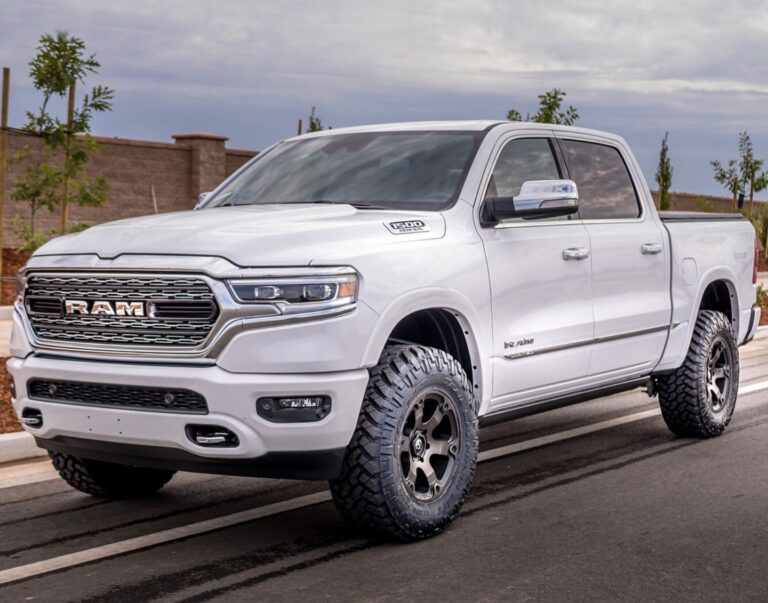Used Wheelchair Trucks For Sale: Your Comprehensive Guide to Accessible Mobility
Used Wheelchair Trucks For Sale: Your Comprehensive Guide to Accessible Mobility cars.truckstrend.com
Introduction: Paving the Way to Unrestricted Living
For individuals utilizing wheelchairs, mobility is not merely a convenience; it is a fundamental pillar of independence, dignity, and quality of life. While standard vehicles offer limited accessibility, specialized "wheelchair trucks" – more accurately, adapted vans and SUVs – provide the freedom to travel, access healthcare, pursue education, work, and engage with communities. These vehicles are meticulously modified to safely and comfortably transport wheelchair users, often allowing them to remain in their chairs during transit, or even to drive from their chairs.
Used Wheelchair Trucks For Sale: Your Comprehensive Guide to Accessible Mobility
However, the significant cost of a brand-new, fully converted accessible vehicle can be a prohibitive barrier for many. This is where the market for used wheelchair trucks becomes invaluable. Opting for a pre-owned vehicle offers a more affordable entry point into accessible transportation without compromising on essential features or safety. This comprehensive guide will delve into every aspect of buying a used wheelchair truck, from understanding your options and identifying key features to navigating the purchasing process and ensuring a wise investment. Our goal is to empower you with the knowledge needed to make an informed decision, ultimately unlocking greater independence and mobility.
The Crucial Role of Accessible Transportation
Mobility is intrinsically linked to personal freedom and social participation. For wheelchair users, the ability to travel independently, or with minimal assistance, profoundly impacts their daily lives. Without accessible transportation, simple tasks like grocery shopping, attending medical appointments, visiting family, or even enjoying leisure activities can become logistical nightmares, leading to isolation and reduced opportunities.
Standard vehicles, with their limited door widths, restrictive interior spaces, and high floor heights, are simply not designed to accommodate wheelchairs. Wheelchair trucks, on the other hand, are engineered with features like ramps or lifts, lowered floors, raised roofs, and securement systems, transforming a conventional vehicle into a gateway for unrestricted movement. These adaptations are not luxuries but necessities, providing safe, comfortable, and reliable transport that is crucial for maintaining a high quality of life and ensuring full integration into society. Investing in an accessible vehicle is, therefore, an investment in independence and well-being.
Why Choose a Used Wheelchair Truck? Benefits and Considerations
Deciding to purchase a used wheelchair truck is a practical and often economical choice, offering several compelling advantages alongside a few considerations to keep in mind.
Benefits:
- Significant Cost Savings: The most prominent advantage is the substantial reduction in price compared to a new model. Accessible vehicle conversions are expensive, often adding tens of thousands of dollars to the base vehicle cost. A used model has already undergone much of its depreciation, making it a much more accessible investment.
- Immediate Availability: New accessible vehicles often require custom orders and can have lengthy waiting periods. Used vehicles are typically available for immediate purchase, which can be critical for urgent transportation needs.
- Wider Selection: The pre-owned market often presents a broader range of makes, models, and conversion types than what might be available new at any given time, allowing for more specific needs to be met.
- Proven Reliability: A well-maintained used vehicle, particularly one from a reputable dealer, has a track record of performance. Any initial manufacturing defects or common issues would likely have been addressed by previous owners.
- Reduced Depreciation: The steepest depreciation occurs in the first few years of a vehicle’s life. By purchasing used, you avoid this initial loss, meaning your investment retains more of its value over time.

Considerations:
- Potential for Wear and Tear: Used vehicles, by definition, have mileage and age. This means components, both automotive and conversion-related, may show signs of wear and could require maintenance sooner than a new vehicle.
- Unknown History: Unless detailed service records are available, the vehicle’s past maintenance, accident history, or specific usage patterns might be unclear, necessitating thorough inspections.
- Outdated Technology: Older models may lack the latest safety features, infotainment systems, or advanced accessibility technologies found in newer vehicles.
- Warranty Limitations: Original manufacturer warranties may have expired or be limited for used vehicles and their conversions. Reputable dealers, however, often offer their own limited warranties.
Types of Used Wheelchair Trucks: Understanding Your Options
While the term "truck" might conjure images of pickups, in the context of wheelchair accessibility, it almost exclusively refers to specially adapted vans and, less commonly, SUVs. Understanding the different types and their conversion methods is crucial for making an informed decision.
Vehicle Types:
- Minivans (Most Common): By far the most popular choice for personal accessible transportation due to their comfortable ride, ease of maneuverability, and family-friendly features. Brands like Chrysler Pacifica, Honda Odyssey, Toyota Sienna, and Dodge Grand Caravan are frequently converted. They typically offer good fuel efficiency for their size.
- Full-Size Vans: Ideal for larger power wheelchairs, multiple wheelchair users, or commercial/non-emergency medical transport (NEMT) services. Vehicles like the Ford Transit, Ram ProMaster, and Mercedes-Benz Sprinter offer significant interior space, higher weight capacities, and often a more robust build.
- SUVs (Less Common): While some SUVs are now being converted, they are generally less common than minivans due to challenges in achieving the necessary low floor and wide entry for wheelchair access without extensive structural modifications. They may appeal to those seeking a more conventional SUV aesthetic or specific all-wheel-drive capabilities.
Conversion Types:
The method by which a vehicle is made accessible is paramount.
- Rear-Entry Conversions: The ramp or lift is located at the back of the vehicle.
- Pros: Often less expensive, allows for standard parking spaces (no need for extra width), and maintains original side doors. Good for a single wheelchair user.
- Cons: Rear visibility can be affected, and the wheelchair user may sit further back from other passengers.
- Side-Entry Conversions: The ramp or lift is located on the side of the vehicle.
- Pros: Allows the wheelchair user to sit in the front passenger or even driver position, better integration with other passengers, and often more interior space for maneuvering.
- Cons: Requires wider parking spaces for ramp deployment, typically more expensive due to more extensive modifications (lowered floor, powered sliding doors).
Ramp and Lift Mechanisms:
- Fold-Out Ramps: Manually or power-operated, these ramps fold out from the side or rear door. They are generally simpler and can be more affordable.
- In-Floor Ramps: These powered ramps slide out from under the vehicle floor.
- Pros: Out of sight when not in use, creates more interior space, and offers a cleaner aesthetic.
- Cons: Typically more expensive and require more maintenance.
- Power Lifts: More common in full-size vans, these hydraulic or electric lifts raise the wheelchair user directly into the vehicle.
- Pros: Ideal for heavier power chairs or when a ramp angle is too steep, robust and reliable.
- Cons: Can be slower than ramps, take up more interior space when stored, and are generally more expensive.
Key Features to Look For in a Used Wheelchair Truck
When evaluating a used accessible vehicle, beyond the standard automotive checks, pay close attention to the specialized conversion features. Their condition directly impacts safety, functionality, and future maintenance costs.
- Ramps or Lifts:
- Operation: Test thoroughly. Does a power ramp/lift operate smoothly, without hesitation or unusual noises? Are all buttons responsive? For manual ramps, do they deploy and retract easily?
- Condition: Check for damage, bends, or excessive wear on the ramp surface, hinges, and motor/hydraulic components. Ensure the non-slip surface is intact.
- Clearance: Confirm the ramp width and height clearance are adequate for your specific wheelchair, including any joystick or headrest extensions.
- Securement Systems:
- Tie-Downs: Ensure there are at least four robust, functional tie-downs (retractable or manual) for securing the wheelchair to the vehicle floor. Test their locking mechanisms.
- Seatbelts: Verify that a proper lap and shoulder belt system is in place for the wheelchair occupant, independent of the vehicle’s standard belts if the user remains in their chair.
- Mounting Points: Check the floor for any damage or rust around the tie-down mounting points.
- Interior Space and Headroom: Sit in the vehicle in your wheelchair. Is there enough headroom, especially when entering and exiting? Can you maneuver easily to your desired position (driver, front passenger, or mid-cabin)?
- Kneeling System: Many converted vehicles feature a "kneeling" system that lowers the rear of the vehicle when the ramp deploys, reducing the ramp angle. Test its operation and ensure it lowers and raises smoothly.
- Door Operation: For side-entry conversions, the sliding door is often powered and modified. Test its automatic open/close functionality, ensuring it operates smoothly and quietly. Check for any signs of misalignment or damage.
- Driver Controls (if applicable): If the vehicle is equipped with hand controls, a steering knob, or other adaptive driving equipment, test them thoroughly. Ensure they are correctly installed, comfortable to use, and in excellent working order.
- Condition of Conversion Equipment: Look for signs of rust, corrosion, or damage on any part of the conversion, particularly underneath the vehicle where modifications were made to the frame or floor. Check all wiring and hydraulic lines.
- Service Records: Ask for detailed service records for both the vehicle and the conversion equipment. This provides insight into past maintenance and potential issues.
The Buying Process: A Step-by-Step Guide
Purchasing a used wheelchair truck requires diligence and a methodical approach.
-
Assess Your Needs:
- Wheelchair Type: Power chair, manual chair, scooter? Measure its dimensions (length, width, height, including user’s head height).
- User’s Mobility: Will the user drive from the wheelchair, transfer to a standard seat, or ride as a passenger?
- Passengers: How many people, including the wheelchair user, will regularly ride in the vehicle?
- Budget: Determine your realistic budget, including the purchase price, potential repairs, insurance, and ongoing maintenance.
- Usage: Daily commute, long trips, occasional use?
- Storage: Where will the vehicle be parked? Does it fit in your garage?
-
Research and Locate Vehicles:
- Specialized Accessible Vehicle Dealers: These are often the best starting point. They have expertise, a dedicated inventory, certified technicians, and often offer warranties. They can also guide you through financing and adaptive equipment options.
- Private Sellers: Can offer lower prices, but come with higher risks (no warranty, "as-is" sale, less expertise). Requires more due diligence.
- Online Marketplaces: Websites like MobilityWorks, BraunAbility, VMI, local dealerships, and general used car sites (e.g., AutoTrader, Craigslist, Facebook Marketplace) often list accessible vehicles.
- Non-Profits/Organizations: Some organizations specialize in connecting buyers with sellers or offering refurbished vehicles.
-
Thorough Inspection (Critical Step!):
- Professional Mechanic: Hire an independent mechanic specializing in accessible vehicles or at least one familiar with van conversions to perform a pre-purchase inspection. This should cover the engine, transmission, brakes, tires, suspension, and overall structural integrity.
- Conversion Specialist: Separately, or as part of the above, have a certified technician from an accessible vehicle dealer inspect the conversion equipment (ramp/lift, securements, kneeling system, wiring). This is paramount for safety.
- Your Own Inspection: Test everything yourself. Operate the ramp/lift multiple times. Check all lights, gauges, AC/heating, and power features. Look for rust, especially under the vehicle and around the conversion points.
- Test Drive: Drive the vehicle on various road conditions. Pay attention to steering, braking, acceleration, and any unusual noises. If the user will drive, have them test it with their adaptive equipment.
-
History Check:
- VIN Report: Obtain a vehicle history report (e.g., CarFax, AutoCheck) using the VIN. This can reveal accident history, flood damage, odometer discrepancies, and past ownership.
- Service Records: Request all available maintenance and repair records for both the vehicle and the conversion.
-
Funding and Financing:
- Loans: Many banks and credit unions offer vehicle loans. Specialized accessible vehicle dealers often have financing options.
- Grants & Assistance Programs: Explore federal, state, and local programs, veteran’s benefits, vocational rehabilitation programs, and non-profit organizations that offer grants or financial aid for accessible vehicle purchases.
- Personal Savings: If possible, paying cash can save on interest.
-
Negotiation and Purchase:
- Based on your research and inspection results, negotiate the price. Be prepared to walk away if the deal doesn’t feel right or if significant issues are uncovered.
- Ensure all agreements are in writing, including any warranties or promised repairs.
Important Considerations & Potential Challenges
- Safety Standards and Certifications: Look for conversions from manufacturers certified by the National Mobility Equipment Dealers Association (NMEDA) under their Quality Assurance Program (QAP). This ensures the conversion meets rigorous safety and quality standards.
- Maintenance of Conversion Equipment: Accessible vehicles require specialized maintenance beyond standard automotive care. Factor in the cost and availability of qualified technicians for ramp/lift servicing, securement system checks, and other adaptive equipment.
- Insurance: Insurance premiums for accessible vehicles can be higher due to the increased value and complexity of the modifications. Get insurance quotes before purchasing.
- Resale Value: While depreciation is less steep for used vehicles, their niche market means resale can be slower. Maintaining good records and keeping the vehicle in excellent condition will help.
- Scams and Misrepresentation: Be wary of deals that seem too good to be true, private sellers unwilling to allow inspections, or dealers pressuring you into a quick sale without proper checks.
Tips for a Successful Purchase
- Be Patient: Finding the right used wheelchair truck can take time. Don’t rush into a decision.
- Don’t Compromise on Safety: The functionality of the ramp/lift and securement systems is non-negotiable. Prioritize safety over cosmetic appeal or minor cost savings.
- Get Everything in Writing: Any promises, warranties, or repair agreements should be documented in the purchase agreement.
- Consult the User: If you’re buying for someone else, involve the wheelchair user in every step of the process, especially during test drives and inspections for comfort and usability.
- Factor in Post-Purchase Costs: Beyond the purchase price, budget for registration, taxes, insurance, and an initial comprehensive service for both the vehicle and the conversion.
Used Wheelchair Trucks For Sale: Estimated Price Ranges
Please note that these are estimated price ranges and can vary significantly based on brand, model, year, mileage, condition, specific conversion type (e.g., in-floor vs. fold-out ramp, power vs. manual), geographic location, and whether purchased from a dealer or private seller. These figures are meant as a general guide.
| Vehicle Type & Condition | Year Range | Mileage Range | Conversion Type | Estimated Price Range (USD) | Key Considerations |
|---|---|---|---|---|---|
| Minivan (Older/High Mileage) | 2008-2014 | 100,000+ | Rear/Side (Fold-Out/Basic Power) | $10,000 – $25,000 | Most affordable entry point. Check for rust, transmission issues, and full functionality of conversion equipment. May require immediate maintenance. |
| Minivan (Mid-Range/Good Condition) | 2015-2019 | 50,000-100,000 | Rear/Side (Power Fold-Out/In-Floor) | $25,000 – $45,000 | Good balance of features, reliability, and cost. Look for well-maintained models with service records. Often still has modern safety features. |
| Minivan (Newer/Low Mileage) | 2020-2023 | Under 50,000 | Side-Entry (Power In-Floor/Fold-Out) | $45,000 – $70,000+ | Closer to new vehicle features and reliability without the steepest depreciation. Often includes advanced driver-assist systems. |
| Full-Size Van (Older/High Mileage) | 2010-2016 | 120,000+ | Rear/Side (Power Lift) | $15,000 – $35,000 | Often ex-commercial/NEMT. High capacity but check for heavy usage wear. More robust but less fuel-efficient than minivans. |
| Full-Size Van (Mid-Range/Good Condition) | 2017-2021 | 60,000-120,000 | Rear/Side (Power Lift) | $35,000 – $60,000+ | Reliable for heavier use or multiple users. Good for larger power chairs. Verify lift capacity and condition. |
Disclaimer: Prices are highly variable. Always verify current market values and inspect any vehicle thoroughly before purchase.
Frequently Asked Questions (FAQ)
Q1: How much does a used wheelchair truck cost?
A1: As detailed in the price table above, costs vary widely. You can expect to pay anywhere from $10,000 for an older, higher-mileage model to over $70,000 for a newer, low-mileage, fully-featured conversion. Factors include vehicle age, mileage, make/model, type of conversion, and overall condition.
Q2: Where is the best place to buy a used wheelchair truck?
A2: Specialized accessible vehicle dealers are generally the safest and most reliable option. They offer expertise, certified technicians, often provide warranties, and have a wide selection. Private sellers can be cheaper but come with higher risks. Online marketplaces are useful for browsing, but always follow up with in-person inspections.
Q3: What critical things should I look for during an inspection?
A3: Beyond standard automotive checks (engine, transmission, tires, brakes, rust), prioritize the condition and functionality of the conversion equipment. This includes the ramp/lift operation (smoothness, noise, speed), securement systems (tie-downs, seatbelts), kneeling system, power doors, and any adaptive driving controls. Look for rust or damage to the conversion components and undercarriage.
Q4: Are there grants or financial aid available for purchasing a used wheelchair truck?
A4: Yes, numerous options exist. Explore federal and state programs (e.g., Medicaid waivers, vocational rehabilitation), non-profit organizations (e.g., charities assisting people with specific disabilities), veteran’s benefits, and manufacturer rebate programs (even for some used models). Your local accessible vehicle dealer may also have information on available grants.
Q5: How often do these vehicles need specialized maintenance?
A5: In addition to regular automotive maintenance (oil changes, tire rotations), the conversion equipment typically requires periodic professional inspection and servicing, usually annually or every 6-12 months, depending on usage. This ensures the ramp/lift, securement systems, and other adaptive features remain safe and functional.
Q6: Can I convert my existing vehicle to be wheelchair accessible?
A6: While technically possible for some vehicles, it is often not practical or cost-effective, especially for minivans that require a lowered floor. These conversions are complex, expensive, and require significant structural modifications. It is generally more advisable and safer to purchase a vehicle that was professionally converted by a reputable manufacturer.
Q7: What is the difference between a ramp and a lift?
A7: A ramp allows a wheelchair user to roll into or out of the vehicle. Ramps can be manual or power-operated, and they either fold out from the door or slide out from under the floor. A lift is a platform that mechanically raises or lowers a wheelchair user into or out of the vehicle. Lifts are typically more robust, better for heavier power chairs or steeper entry, and are common in full-size vans.
Conclusion: Empowering Independence Through Informed Choice
The journey to finding the right used wheelchair truck is a significant one, directly impacting the mobility and independence of a wheelchair user. While the upfront cost of a new accessible vehicle can be daunting, the robust and growing market for pre-owned models offers a viable and often more economical path to accessible transportation.
By understanding the various types of vehicles and conversions, diligently inspecting key features, navigating the buying process with care, and leveraging available resources, you can make an informed and empowering decision. Remember, the goal is not just to purchase a vehicle, but to invest in freedom, safety, and the ability to fully participate in life. With thorough research, patience, and a focus on safety and reliability, a used wheelchair truck can truly be a gateway to unrestricted living, opening up a world of possibilities for its owner.





